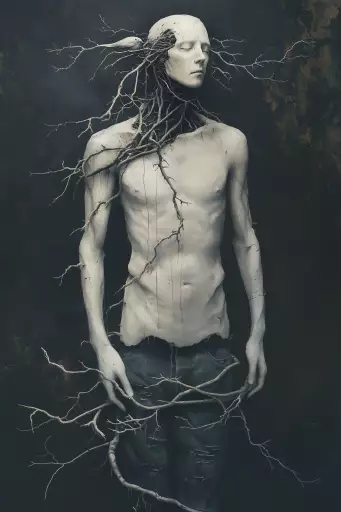Explore the Best AI Image Gallery

The Algorithmic Brush: Navigating the Ethics of AI-Generated Media
The realm of creativity is undergoing a seismic shift as artificial intelligence (AI) steps into the role of artist, designer, and storyteller. AI-generated media, from paintings and music to text and video, is rapidly evolving, blurring the lines between human and machine ingenuity. While this technological leap presents exciting opportunities for innovation and artistic expression, it also raises profound ethical considerations that demand careful attention.
The Potential of AI in Creative Endeavors
AI-powered tools are already transforming various aspects of the creative industry:
- Content Creation: AI algorithms can generate written content, music compositions, and even scripts for films and video games.
- Design and Visual Arts: AI can assist in creating stunning visuals, designing logos and branding materials, and generating unique artwork.
- Personalization and Customization: AI can tailor creative outputs to individual preferences, enabling personalized experiences in music, art, and storytelling.
These advancements hold immense promise for boosting efficiency, democratizing access to creative tools, and exploring new artistic frontiers.
Navigating the Ethical Labyrinth
\nThe rise of AI-generated media necessitates a critical examination of its ethical implications:
- Authorship and Ownership: Who owns the copyright to AI-generated works? Is it the creator of the AI algorithm, the user who prompts the AI, or the AI itself?
- Bias and Discrimination: AI algorithms are trained on vast datasets, which can reflect existing societal biases. This can result in AI-generated content perpetuating harmful stereotypes and discrimination.
- Misinformation and Manipulation: The ability to create realistic and convincing fake media poses a serious threat to truth and trust. AI-generated deepfakes can be used for malicious purposes, such as spreading propaganda or damaging reputations.
- Job Displacement: Automation powered by AI may lead to job losses in creative fields, raising concerns about economic inequality and the future of work.
Addressing these ethical challenges requires a multi-faceted approach involving collaboration between policymakers, industry leaders, researchers, and the general public.
Guiding Principles for Responsible AI Development
To harness the transformative power of AI while mitigating its risks, it is crucial to establish guiding principles for its development and deployment in creative industries:
- Transparency and Explainability: Making AI algorithms more transparent and understandable can help identify potential biases and ensure accountability.
- Human Oversight and Control: Maintaining human control over the creative process is essential to preserve artistic integrity and prevent unintended consequences.
- Diversity and Inclusion: Ensuring that AI training datasets reflect the diversity of human experiences can help mitigate bias and promote equitable outcomes.
- Education and Awareness: Raising public awareness about the capabilities and limitations of AI is crucial for informed decision-making and responsible use.
The Future of Creativity in an AI-Powered World
AI-generated media has the potential to revolutionize the creative landscape, opening up new avenues for artistic expression, innovation, and collaboration. However, it is imperative to approach this technological advancement with a sense of responsibility and foresight. By establishing ethical guidelines, fostering open dialogue, and prioritizing human values, we can navigate the complexities of AI-generated media and ensure that it serves as a tool for positive change in the world.







](https://images.ai-img.art/thumbnails/150/f9584153b4cddd8c9fab611dc10247549b275c59bc173251e37d0935874f9deb.webp)

](https://images.ai-img.art/thumbnails/150/bddf3ae4a232290858389b933c866ad3be429ef2e25c23a9f4d7713ed6e44d0b.webp)















](https://images.ai-img.art/thumbnails/150/f67d9af3398150f2ab1bcf250717fea134275e2ca896252b54a4d9bb3719f9ac.webp)







](https://images.ai-img.art/thumbnails/150/4289d1230b86a96c4d556636c3167bed0ef38f850826549517e4e45db4d87bf7.webp)
](https://images.ai-img.art/thumbnails/150/008b5d5d49667cc2e93a5f8a8adfaa545963da99c39ff0901f5296294636400d.webp)





](https://images.ai-img.art/thumbnails/150/c2c9c48b38fae37f0a457b80b084ed01ba803810fc8f488c8f610c03abc74049.webp)
